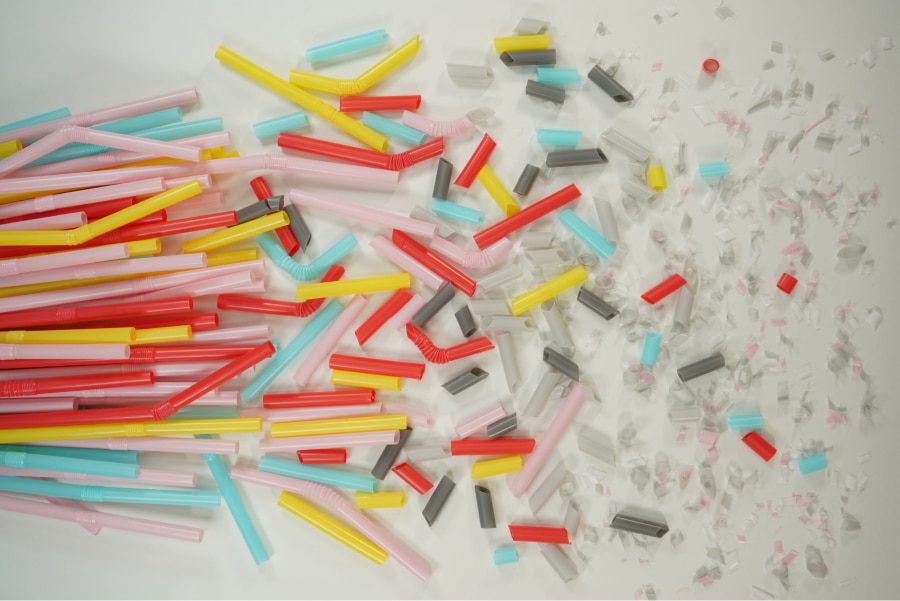22nd and 23rd Adaptations to Technical and Scientific Progress (ATP): Updates for Cosmetic Ingredients
Within the European regulatory framework, Regulation (EC) No 1272/2008 on Classification, Labelling and Packaging (CLP) stands as a cornerstone in protecting human health and the environment.
It sets out harmonised criteria for the classification, labelling and packaging of chemicals and mixtures, and is a key reference for both the chemical and cosmetics industries, as it defines how hazardous substances must be communicated throughout the supply chain.
One of the most significant aspects of the CLP Regulation is the series of Adaptations to Technical and Scientific Progress (ATP), delegated acts of the European Commission that regularly update Annex VI, which contains the list of harmonised classifications.
The 22nd ATP was published on 20 May 2024 as Delegated Regulation (EU) 2024/197, followed by the 23rd ATP, issued as Delegated Regulation (EU) 2025/1222. Both introduce important changes, particularly for substances relevant to the cosmetics sector.
What is the CLP Regulation?
The CLP Regulation (Regulation (EC) No 1272/2008) is based on the United Nations Globally Harmonised System of Classification and Labelling of Chemicals (GHS). Its purpose is to:
- Ensure that the hazards of substances and mixtures are clearly communicated through the use of labels and safety data sheets.
- Enable consistent and informed risk management across the entire supply chain.
- Promote the free movement of chemicals within the European market.
CLP applies to all commercialised chemicals, whether they are used in industrial products, detergents, pesticides or cosmetic ingredients.
For finished cosmetics, which are regulated under Regulation (EC) No 1223/2009, CLP does not apply directly. Instead, CLP classification is essential for assessing the ingredients contained within cosmetic products.
What is the Adaptation to Technical and Scientific Progress (ATP)?

ATP are delegated acts of the European Commission that update Annex VI of the CLP Regulation. This annex contains the list of substances with harmonised classification, which is established at European level and binding on all member states.
Each ATP can introduce:
- New harmonised classifications.
- Changes to existing classifications.
- Elimination of obsolete classifications.
The increasing number of ATPs (22nd) reflects scientific and toxicological developments in the evaluation of substances.
These updates are also essential for the cosmetics industry, as a new classification can affect:
- the safety assessment (CPSR) of a cosmetic.
- the maximum permissible concentration of an ingredient.
- the need for restrictions on use or prohibitions.
- the dialogue with suppliers, who must update SDS, labels and packaging.
The 22nd ATP of the CLP Regulation: General Framework
Delegated Regulation (EU) 2024/197, published in the Official Journal of the European Union on 20 May 2024, represents the 22nd ATP of CLP.
It was adopted based on the opinion of ECHA’s Committee for Risk Assessment (RAC) and updates the classification of several substances while also adding new ones.
Timing
- Published date: May 20, 2024.
- Effective date: 9 June 2024.
- Mandatory application: as of December 1, 2025.
- Voluntary application: right from the start.
Companies can therefore act in advance of its application to ensure stronger protection and to prepare for future regulatory changes.
Focus on Cosmetic Ingredients
Some substances affected by the 22nd ATP are of particular interest to the cosmetics industry.
Among these, the following stand out:
Salicylic acid (CAS 69-72-7)
Salicylic acid is commonly used in cosmetics such as:
- Chemical exfoliant.
- Anti-acne agent.
- Secondary preservative.
New for the 22nd ATP:
- The Repr. 2 classification (H361d – Suspected of harming the foetus) has been maintained.
- This classification is not new, but it is important to remember that it restricts use in leave-on cosmetics intended for children under 3 years of age, as it is subject to restrictions in Annex III of Regulation 1223/2009.
Resorcinol (CAS 108-46-3)
Used in hair products, dyes and dermatological treatments.
New for the 22nd ATP:
- The classification as Acute Toxic 4 and Skin Irritation 2 has been confirmed.
- Added the Repr. 2 classification (H361f – Suspected of harming fertility).
Cosmetic Impact:
- This classification could affect the maximum allowable concentration.
- It is likely to be evaluated by the SCCS, which may recommend its use only under certain conditions.
Triclocarban (CAS 101-20-2)
Used as an antibacterial in detergents and soaps.
New for the 22nd ATP:
- Classified as Repr. 1B (H360Df – May harm fertility or unborn baby).
- Toxic to reproduction category 1B.
Consequences:
- A Repr. 1B classification entails the prohibition of use in cosmetics according to Annex II of Regulation 1223/2009.
- Its use in cosmetics is now considered non-compliant, reinforcing an already ongoing phase-out trend.
The 23rd ATP of the CLP Regulation: General Framework
The 23rd ATP of the CLP Regulation has been published as Regulation (EU) 2025/1222 and introduces several important changes for the cosmetics sector.
Below is a summary of the key points most relevant to those working with formulations, labelling or regulatory documentation.
Ozone (INCI: Ozone)
Already used in some cosmetics for its antibacterial properties, ozone is now classified as a suspected carcinogen (H351), mutagenic (H341) and toxic by inhalation (H330). It is also highly toxic to the aquatic environment. Its use in cosmetics will require special attention, especially for spray or aerosol formulations.
Benzyl Salicylate (INCI: Benzyl Salicylate)
Already subject to restrictions in cosmetics, it now receives the Repr. 1B classification (H360fd), i.e. “may harm fertility and the foetus”. This could affect its use in perfumes, deodorants and scented creams, with possible repercussions also on labelling.
Zinc Pyrithione (INCI: Zinc Pyrithione)
Once widely used in anti-dandruff treatments, it is now classified as toxic to reproduction (Repr. 1B, H360D) and already banned in cosmetics. The 23rd ATP confirms and strengthens this position.
Oxybenzone (INCI: Benzophenone-3)
An already restricted UV filter, is now recognized as a suspected environmental endocrine disruptor. Although it is not yet banned, regulatory pressure on this ingredient increases.
The new classifications will apply from February 1, 2026. Companies should already start reviewing formulas, PIFs, and labels to avoid future non-compliance.
Regulatory and Operational Implications
The 22nd and 23rd ATP of the CLP Regulation carry significant implications for all actors in the cosmetics supply chain. Suppliers of raw materials must update Safety Data Sheets (SDS) and CLP labels for their ingredients, for example by including new classifications such as reproductive toxicity or skin sensitisation.
Cosmetic manufacturers, in turn, need to review the Product Information File (PIF), revise the Safety Assessment (CPSR) in light of updated toxicological data, reformulate products containing reclassified ingredients such as preservatives, fragrances or dyes, and maintain ongoing dialogue with suppliers to receive timely updates.
Safety assessors must also closely monitor ECHA databases, regulatory updates (ATP) and SCCS opinions, adjusting the margins of safety (MoS) where necessary and evaluating the potential cumulative effect of multiple hazardous substances within a formulation, particularly in cases where non-negligible toxicological synergies are identified.
Connections with the Cosmetic Regulation
Regulation (EC) 1223/2009 establishes that an ingredient classified as carcinogenic, mutagenic or toxic to reproduction (CMR) cannot be used in cosmetics, except under very strict conditions set out in Article 15.
The harmonised CLP classifications therefore act as guiding tools for applying restrictions in the cosmetics sector. Each new CMR classification in CLP leads to:
- Inclusion in Annex II (banned substances).
- Or, in some cases, a restriction in Annex III (concentration, conditions of use, etc.).
Conclusion: Implications of CLP ATPs for the Cosmetics Industry
The most recent ATPs of the CLP Regulation once again demonstrate how dynamic the European regulatory framework for chemicals has become. For the cosmetics industry, these updates are not merely technical adjustments but potential game changers in product formulation, marketing and safety.
Industry professionals must maintain a constant focus on regulatory developments to ensure both compliance and product safety.
The link between the CLP Regulation and the Cosmetic Regulation, although indirect, is now more strategic than ever: each ATP can reshape the commercial fate of an ingredient, and with it, the prospects of an entire cosmetic line.
Contact us and we will be pleased to support you in keeping your products compliant across all relevant markets of destination.



